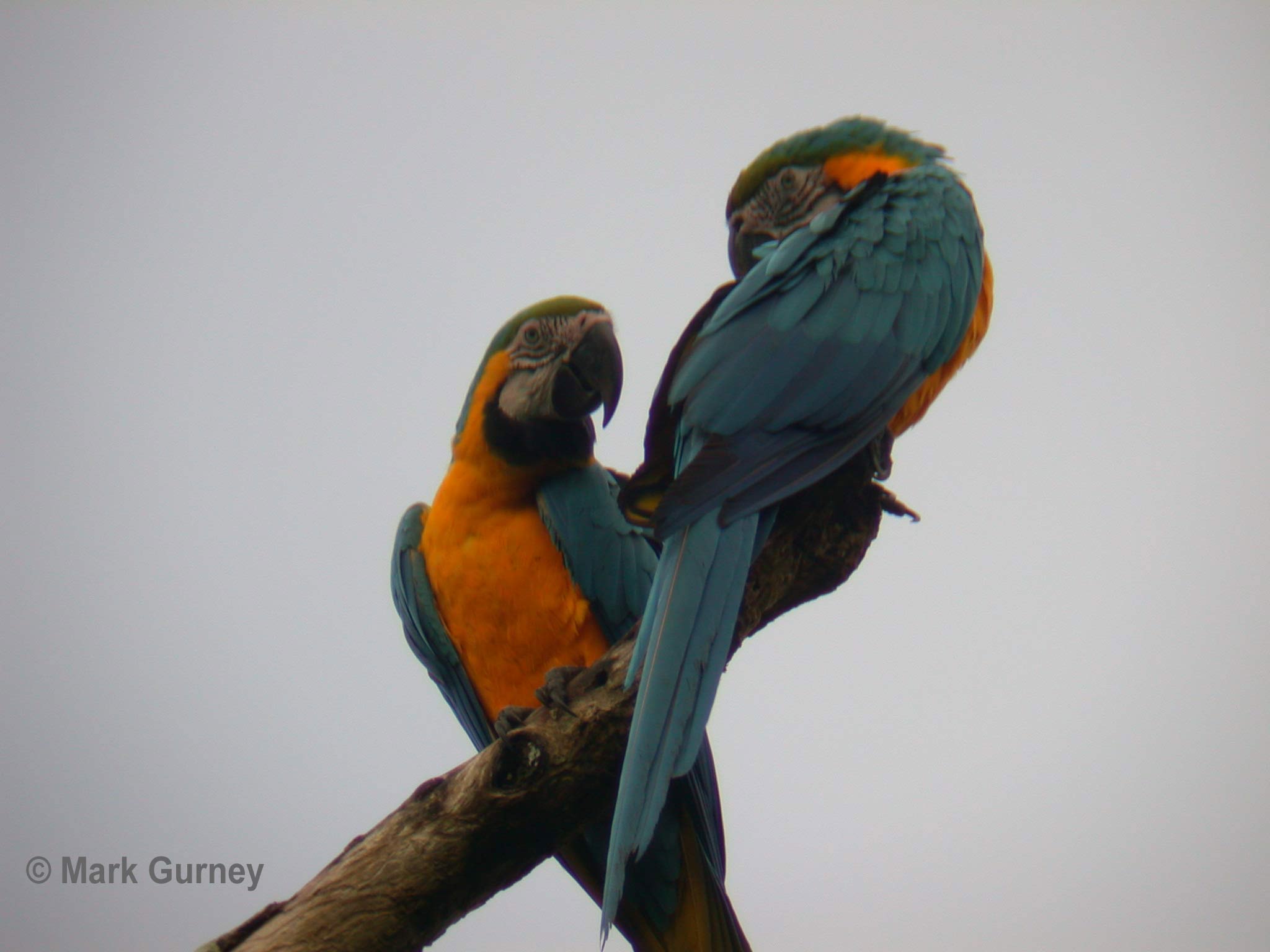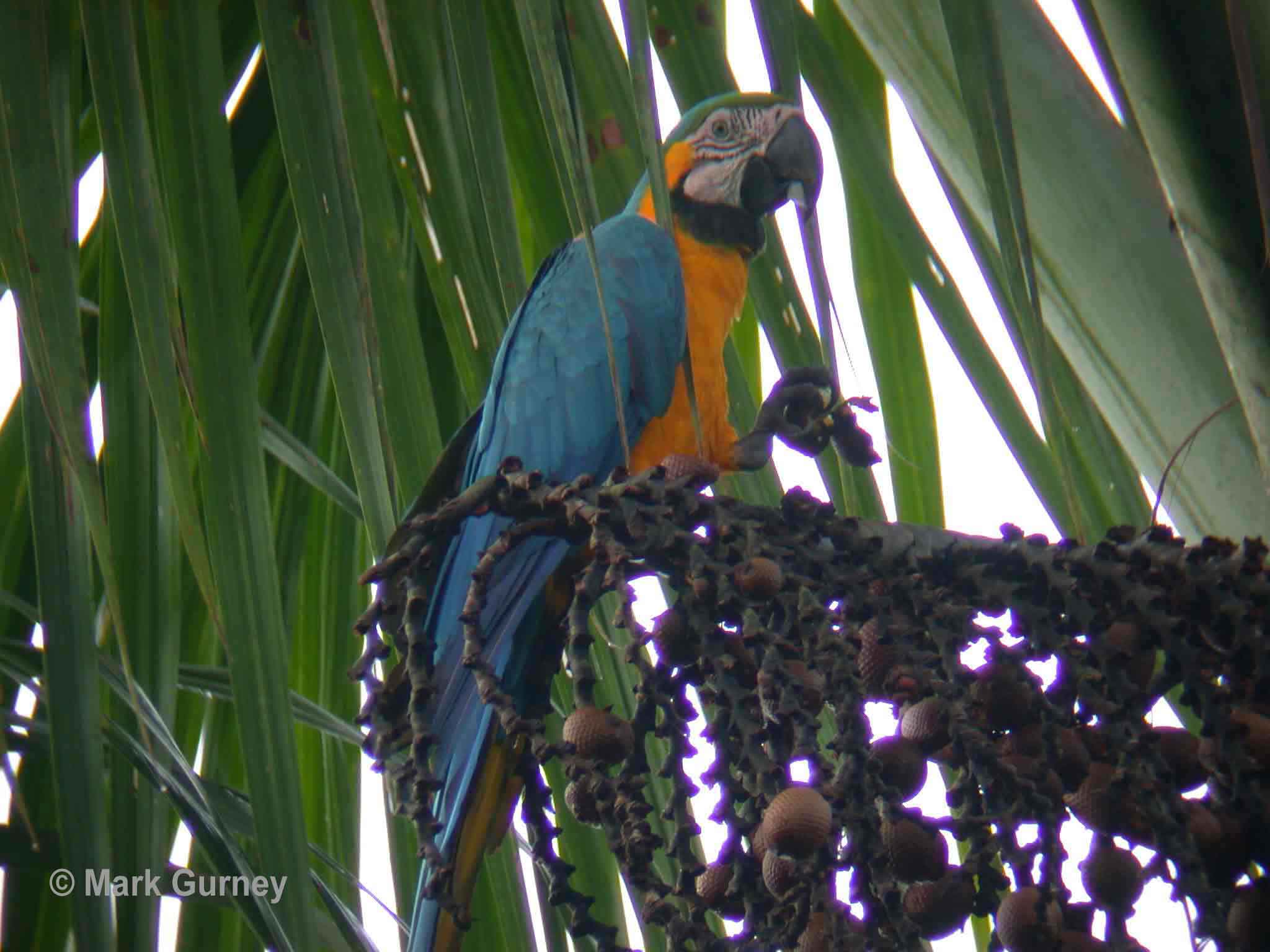Blue and Yellow Macaw (Ara ararauna) Classification: Class: Aves, Order: Psittacformes, Family: Psittacidae, Genus: Ara, Species: ararauna, IUCN Status: Not Listed
These beautiful and highly prized birds have bright green foreheads with blue feathers on their dorsal (back) areas and yellow ventral (stomach) feathers. They have black chins, feet, and beaks. Their beaks are very powerful and are used to break nut shells. They have white facial skin patches that may blush to pink when the birds become excited. Blue and Yellow Macaws are relatively large birds, having a body length of 36 inches (92 cm) and a wingspan of almost four feet (115 cm). They have been known to weigh over a kilogram (up to 2.5 lbs). In addition to their appearance, their trainability and intelligence make them desirable pets. This has resulted in a decrease in the species' numbers in the wild.
Blue and Yellow Macaws are found in lowland areas from Panama all the way to Paraguay. They seem to prefer forests of moderate density but are also seen in palm trees above water sources such as swamps or rivers. Hollows of dead trees are their favorite locations for nest building. Blue and Yellow Macaws have a diet that includes fruit fiber, nuts, and seeds, with their favorite food being the seed of the Hura crepitans tree. They also have been known to eat mineral and salt bearing clay found near riverbanks.

These birds congregate in flocks of 100 or more individuals that move as a leaderless group. Pairs within the group, which probably mate for life, tend to fly close together with their wings almost touching. It is thought that these birds are sexually mature by age 3 or 4. Females lay 2 to 3 eggs and seem to do the incubating, although both sexes are active in the eggs' defense. Infants hatch blind and without feathers. Only the strongest offspring survives, and it becomes independent in several months.
Although Blue and Yellow Macaws are not considered to be endangered, their numbers are dwindling. This is primarily due to habitat encroachment and the capture of these birds for use as pets.
(http://www.oaklandzoo.org/atoz/azblylmc.html)
(http://www.k12.de.us/warner/macaw.htm)
CLICK HERE FOR MORE EXTRAORDINARY
ANIMALS and PLANTS OF YASUNÍ,
THE MOST BIODIVERSE FOREST KNOWN ON EARTH
Yasuní Biodiversity Main Page
|


